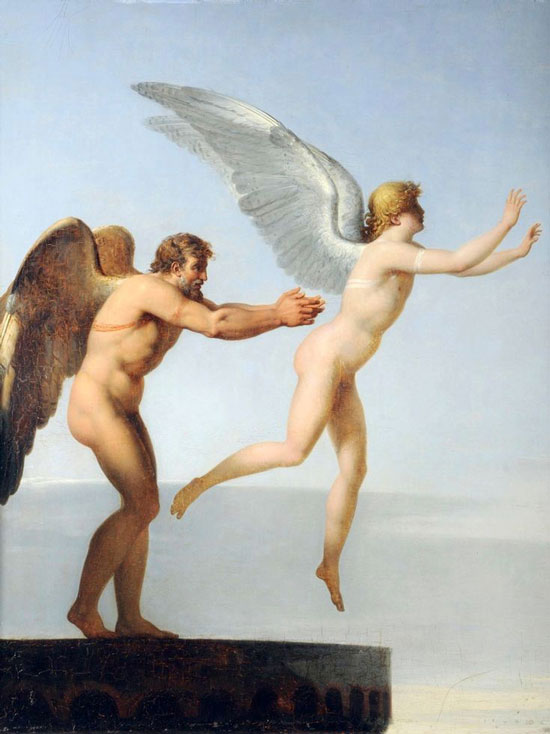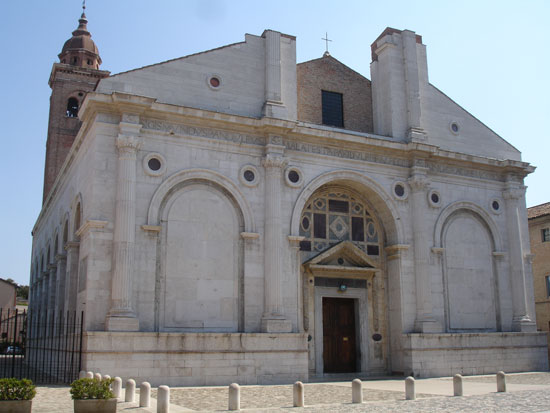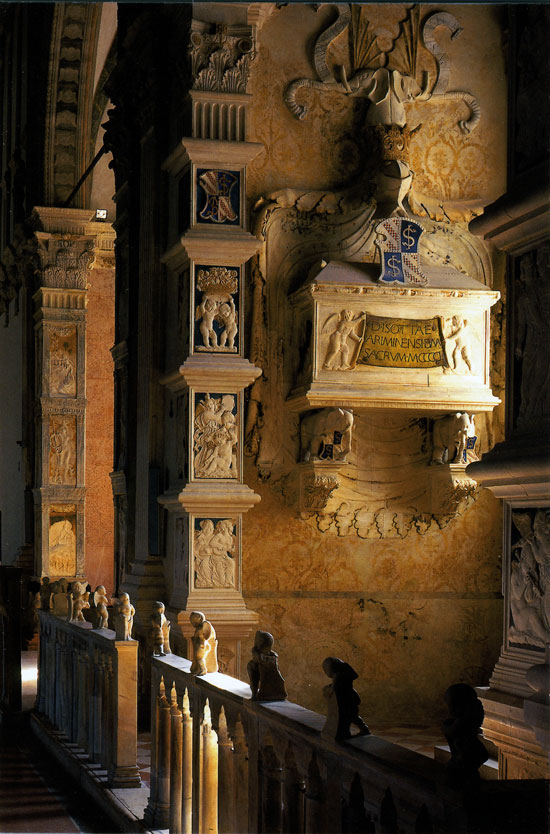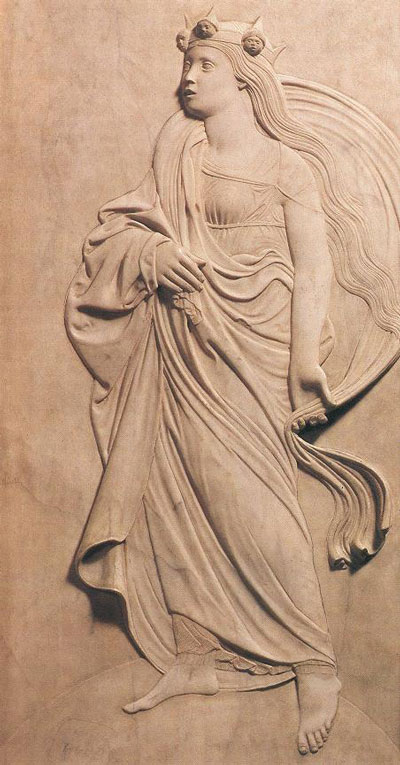Ethical

—failed ethics—
– Reliefs from the Tempio Malatestiano, Rimini
Agostino di Duccio
Is there such a thing as a failed ethics?
To the extent that the progress of the Anatomy of Norbiton to date has been concerned with an elucidation of the virtues and vices of the Norbiton: Ideal City, we have already begun to answer that question.
More generally, while we have no belief system, no Authority either to respect or oppose, the Ideal City, like any city, involves interaction between citizens; we may not be gregarious, but we are social. And, while we freely admit the desires of others, acknowledge the range and mutability of our own, we also recognise that the essence of negotium is that those desires are made to dovetail, no matter how rough, unplaned and cross-grained the dovetail may be.
All this would seem a fit foundation for an ethics (and even a moral structure) of some sort. But a Failed Ethics? Are we saying anything more than that societies, communities, cities develop rules of thumb to govern intercourse, and that ours is no exception?
I think we are saying more than that, yes, and strange to say, given that the citizens of the Ideal City are such unwieldy Cyclopic creatures, I would maintain that that the moral life of Norbiton is characterised by legerezza. Airy lightness. A levity, not to say levitation, of moral discourse. A moral life freed from the false telos of success, free, therefore, of censure, of disapprobation, of any appearance of rectitude, free from the need to calibrate our principles, to coordinate our moral thought; a moral life, in short, governed by could rather than by ought; by generosity, rather than circumscription.

—legerezza—
– Isotta degli Atti isote ariminensi forma et virtvte italie decori (“to Isotta of Rimini, the ornament of Italy for beauty and virtue”); v, the Malatesta elephant, 1446
Matteo de’ Pasti (contemporary cast)
![]()
I say that we have no Authority to oppose, but that is not true.
Norbiton: Ideal City is invisible not without reason. It is established in the midst of a querulous world, an aggressive and appetitive world. Our ties to that world are tenuous, or better tenebrous: we are not oblivious to the suffering of those who seek to exist in that world, far from it, but while the Ideal City may be as well-founded, as justified, as any other, it is not as powerful; our defiance, therefore, is coupled with a necessary elusiveness.
Let us think for a moment how the wider metropolis sees us. The citizens of the Ideal City are lazy, idle, negligent, feckless, unrepentant, useless, parasitical. We are false. We are pompous, elitist, obscure, self-indulgent, conservative, fat, ugly and old. We are not living life to the full, not making the most of ourselves, not going the extra mile, not putting ourselves on the line. In the great Factory of the World, we are the muck, the impurity in the ore, the pollution in the earth, the by-product, the waste, the clutter, the extended tea break, the poor working practice. We are the enemy of self-reliance, productivity, efficiency; of the rewards of labour, the solidarity of the working poor, and the communion of saints.
All this may be true. If we slink, therefore, it may be that we slink out of self-knowledge. We know ourselves to be what we are taken to be. And therefore we slink, like sinners under the eye of God.
But if the metropolis thus thinks us into existence, as moral beings, then perhaps we can, in return, have our silent say: observe, for instance, that the metropolis is a gregarious, but not a social grouping.

—gregarious, not social—
– Adoration of the Magi
Hieronymus Bosch
In the metropolis, individuals are piled on top of each other, their interrelations defined by the policing of boundaries and the occasional foray made into the private space of others. Individuals flood into the city, fight and claw, die, go under, and are replaced. Perhaps these, then, are the true Cyclopes; perhaps it is we who, having opted out of the metropolis in order that we might establish a city, are now defined by our social interaction, properly understood.
![]()
To return for a moment to the subject of Authority and our timorous resistance to it, it is also true that all social structures tend to hierarchy of one sort or another. And since hierarchies make for tyrannies, there are tyrants in our midst.
Tony dell’Aquila, old Duke and tyrant of Kingston, stalks our peaceful realm with unknown intent. And Kelley pursues him, across the infinite featureless space of our ignorance, like Orion pursuing Taurus across the heavens, his hounds loping before him.
![]()
What is this lightness, this legerezza?

—what is this lightness?—
– Daedalus launches Icarus
Charles Paul Landon
We have noted that the moral is not associated with the Failed Life. It is, one way or another, associated with success and failure. Morality, Success and Failure are, broadly speaking, brought into existence by other people. By implication, then, they are each in their way a distortion, an imposition, a coercion, or a conformity.
To clarify. If you strip away all social ties, if you exist only or predominantly in your own company, your sense of what is or is not moral (never much developed or especially coherent at the best of times) is gradually parked along with most of your other social sense: in your own company you do not notice if you are ill-humoured, for instance, just as you do not notice that you smell; you have no sense of your oddness. In the same way you do not feel socially inferior in your own company except in imagination; and you do not behave badly. You cease to notice what shape your object of social being is, you inhabit your sphere of possession promiscuously, like a gas.
However, freed now from the junk of moral and social intercourse, your sense of what pertains to you, of what is coherent, apt, appropriate in your own terms, is amplified. It is not a question of doing what you want – you can feel just as dissatisfied with your actions as ever; but the basis on which your dissatisfaction rests is more precisely calibrated; if something atrophies, it is because you do not use it, and you do not use it for a reason; if you develop what you regard as bad habits (and you do1) they are bad habits only insofar as they run counter to what we shall call your deeper integrity (and integrity can mean integrating such qualities as disparate as, for example, purposelessness, fecklessness, obsessiveness and insanity).
The death of the moral, in other words, releases what we call the ethical, the being that knows and governs itself. It is this being who will participate in the creation of the Ideal City.
And it follows that if our only moral duty, properly understood, is to let others be, then the Moral Space of the Ideal City will be that which we leave to others; and the ethical, by contrast, will be the basis of the Action we take, in and around that Moral Space; will be, ultimately, both the reason why and the means by which we penetrate that Moral Space.
Such penetration is by this definition transgressive. An Ethical being, in short, will be an immoral one.
Even the Ideal City is marked by piquant compromise.
![]()
Discussion of Moral Philosophy in the Renaissance in Italy was dominated by medieval scholastic models, which in turn were dominated by Aristotle and other ancients, as filtered through Boethius and Cassiodorus. The most published books between 1450 and 1500, the period of the incunabula, were not beautiful Greek editions2 but university text books that had been in use for centuries: commentaries on Duns Scotus and Aquinas. The universities were institutions largely resistant to the new thinking. Humanism was something you did at school, if you were the bastard son of a Duke. It was otherwise not an academic career path. Erasmus, Thomas More, Guicciardini, Machiavelli belonged to a coming age.
Moral philosophy was subject to a standard tripartite division: Ethics, Oeconomics, and Politics. If Politics was a discussion of the governance of the State and Oeconomics governance of the family (from οίκος, meaning hearth), then Ethics was understood to be to governance of the self (from ήθος, meaning temperament or disposition)3.
An ethical being, as opposed to a moral one, is a diligent, but not overworked, administrator of the resources of his soul. An exponent, in other words, of legerezza.
![]()
A Florentine of the quattrocento was, by contrast with a Norbitonian of the ventunesimo, a morally-worked-up being.
He was a good Florentine first, and a good Christian second; and as a good Florentine he could be further understood as a good family man, or faction man, or guild man. And while these roles doubtless conflicted, it can be said that a citizen of Florence could understand his own actions as falling within some well-defined and commonly understood contexts, and himself, consequently, as situated in a given moral space.
This moral space was, appropriately for a commercial people, mapped out in duties like a set of ideally nested Platonic objects of diminishing size which contained the irrational energies, the occasional violent outspurtings, of the cramped and costive Florentine soul. While there were competing versions of order in society (guild republicanism, the Guelf party, the dominion of the Ottimati) a citizen did duty to a particular version of order.
Each duty—duty to the church, to the Medici or the Strozzi, to the Arte di Calimala or to the Arte di Lana—has a specific weight, a gravitational mass. And so, as though somehow to slough off this weight by some magical transference, some arcane appropriation through mimicry of the weight of devotion and duty owed to the medieval church, the guilds commissioned a clutch of ponderous stone or bronze statues of saints and arranged them around the grain market, latterly guild church, of Orsanmichele.

—ponderous—
– San Filippo Apostolo
– Nanni di Banco
Photo: Elenasan (lavoro personale) [GFDL (http://www.gnu.org/copyleft/fdl.html), CC-BY-SA-3.0 (http://creativecommons.org/licenses/by-sa/3.0/) or CC BY-SA 2.5-2.0-1.0 (http://creativecommons.org/licenses/by-sa/2.5-2.0-1.0)], via Wikimedia Commons
![]()
By contrast, the legerezza in the moral line typically—in fact, by definition—runs counter to the main weight of moral sentiment in a society.
It is not that the main weight is necessarily vicious (although in all likelihood it will, largely, be so); it is that, to repeat, there is a contrapuntal relationship between any self-consciously independent moral line and the prevailing moral climate.
Consider, as a somewhat oblique example of what I mean, the Tempio Malatestiano in Rimini, the exterior of which was designed by Leon Battista Alberti between 1450 and 1460 around the shell of a Franciscan Church, for Sigismondo Pandolfo Malatesta, Lord of Rimini, a man who had, Burkhardt notes, a disinterested love of evil.

—upcurve or downcurve—
– Tempio Malatestiano
Rimini
Its facade resembles, not accidentally, a Roman triumphal arch (of which Rimini boasted a conspicuous example—the Augustus Arch), both in its general disposition, in its dignified incompleteness (is this the upcurve or downcurve of a ruin, you might ask) and in the severe ornamentation of its detail.
The interior of the temple—a wide nave with a simple pitched wooden roof and eight gothic side-chapels—was constructed under the architectural-decorative supervision of Veronese architect, miniturist and designer of medals, Matteo de’ Pasti, but it is in the execution of the decorative reliefs by the Florentine Agostino di Duccio that the building derives its claim to legerezza. The building as a whole serves a purpose of some sort—whether religious, civic, auto-hagiolatrous, testamentary, apotropaic, celebratory, or a mix of these and other functions, we can only speculate—and in that purpose is comprised its telos, its moral end; but like moral discourse properly understood, it is in the execution, the process, the working towards, the overcoming of resistance, the felicitous emergence, and not in its grand narratives, that the life of the project resides.

—life of the project—
– Chapel of San Micheal Archangel, with the tomb of Isotta degli Atti, Tempio Malatestiano
– Agostino di Duccio, Matteo de'Pasti (?)
Thus the reliefs, which in their retreat (in aesthetic terms) to the line signal a decorative, or ornamental intent. It has been noted (I don’t recall where) that Agostino is the true precursor to Botticelli, whose own understanding of medieval aesthetic sensibility was profound. In the earlier works of Botticelli, as in a fourteenth century tapestry, the decorative line tends to a flattening of the picture plane; these things do not have a moral weight (in spite of their occasional superficially didactic purpose), so much as an intellectual and aesthetic and ultimately ethical volatility; the great bronze horsemen of, for example, Donatello in Padua or Verrocchio in Venice have, by contrast, precisely massive, morally coercive, force.
![]()
Pius II, Sigismondo’s great enemy, described the Tempio as being ‘full of pagan gods and profane things’. Agostino’s reliefs decorate the entrances to the side chapels, and while it was not very unusual in the quattrocento to demarcate sacred spaces in this way, it was always contentious. Agostino’s reliefs, in any case, are not an exercise in demarcation but in saturation.
It has been argued that the proliferation of classical gods and myth in the second half of the quattrocento arrives like a new moral terminology4; according to this reading, the Christian moral discourse of sin and redemption was perhaps not adequately flexible for a man like Sigismondo (or other educated men and women of the Renaissance) to locate himself ethically; the antique offers him both a rich alternative psychic vocabulary with which to construct an identity, and also an apotropaic real world presence, where the beasts to be warded off are not devils and spirits but our worser (or less able, or less powerful) selves.
Whether the profane subject matter of the reliefs offers a field for possible introspection, or are merely an expression of a singular Will running counter to the prevailing moral decorum, there is, perhaps, a conjunction between all this and the classical austerity of the facade: the passage from exterior to interior is like a disarming, a removal of civic armature; if the exterior is a declaration of collective or individual resistance and triumph, then the interior comes as a sort of dishabille of the soul, an unexpected felicity. The defiance of the exterior is built around a kernel of lightness, playfulness, and generosity, as though there were some physics of moral displacement in play, some affable ethical balance established in the whole.
![]()
The generosity of this inner space, if I can sum it like that, is how I conceive our Cyclopean caves in Norbiton.
Generosity is a sort of overflowing, a superfluous movement; it is a virtue appropriate to a Cyclopic nature. It is, if not necessarily a spontaneous, then an impulsive movement, billowing outward from an inner space.

—billowing outward from an inner space—
– View of Rimini, Chapel of the Planets, Tempio Malatestiano
– Agostino di Duccio
The exercise of duty, by contrast, consists in a costive alignment with external structures, which for us is uncongenial, for all that it is a civic virtue.
Bearing all which in mind, I will conclude by stating (and, where necessary, mildly refuting) the objections to all of the above of Hunter Sidney and, to begin with, Civ Clarke.
It seems to Clarke that what I am proposing is the virtue of the moral sidestep. A nimble foot, a quickness of perception, and we can glide past any conglomerated moral object. If we set up our moral objects as emanations of le pouvoir, a Foucauvian malevolence, we can, so to speak, understand them out of existence.
Mine, he says, is the immoral voice of the non-participant.
But I think that Clarke has failed to see my central concern—that we need to rebuild some sort of ethical dignity, some position of self-respect as ethical beings. If an ethical being is one who takes Action, then when all your Action in life has been marked by failure, the moral structures cannot simply be allowed to emerge. If we are to build towards something, something external to us—the Ideal City, I mean—then we need to be sure, also, that we build from somewhere.
Put another way, if most moral reasoning, or discourse, is, as I believe it to be, junk—a patchwork structure built up piecemeal from whatever underlying systems of moral thought lie closest to hand, through which we seek either to justify our passing desires and hatreds, or to exert momentary control over others; then any ethical system that aspires to more constructive use will be characterised by half-assertion, hesitation, a complexity of thought correcting our dead-reckoning. These are not a bar to Action, but a prop to Right-Action. At the root of the ethical structures of the Ideal City is, in spite of appearances, an appeal to pragmatism.
Such an understanding might very well, in the end, lead you to adopt a high risk line—a position, for example, of no compromise, a ¡no paserán! of the spirit and sometimes of the body. But you will do so from a morally informed, rather than blindly instinctual, position. You will have narrowed your guess to the point that your action—or studied inaction—is the best course (probably).
And to do this consistently means, on occasion, some nimble thinking, yes.
![]()
Hunter Sidney’s objection, if I can record it as such, is differently grounded.
I have described to him the Tempio, much as I have described it above. He knows of the Tempio, and of Sigismondo, because he is familiar with the Cantos. He says nothing directly about the Tempio, but he reminds me that Pound identified not only Sigismondo as a factive Will, but also Mussolini.
We are sitting in his upstairs room, drinking tea. I notice that, on his desk, he has the photograph of Mrs Isobel Easter, with Kelley and dell’Aquila and one or two others I do not recognise; he does not tell me at this point (but does some days later) that he had stolen this photograph from dell’Aquila’s house; and he does not draw attention to it (although I notice it). Nor does he tell me what I later discover: that he has in the past few days received notice of a recurrence of his cancer. He is, in other words, situated in ways I cannot know and would not comprehend in relation, for instance, to the Tempio, which he will never visit, to the woman, whom he will never see again, to the Cantos, which he will not now re-read. And so on. A peculiar moral situation, then, in which, I note in retrospect, he is more moved to recapitulate what he already knows (Pound and Mussolini) than worry himself about what he does not (the Tempio).
Anyway, he remarks that this distinction of mine between duty and generosity is very convenient; if our virtues, he says, are in our gift, then they are under our control.
Perhaps, he offers, the beauty of an obligation, a duty, is that we are forced only to recognise it; we surrender to it; it is a form of self-abnegation. Thus the structure of romantic love as formalised in the thirteenth century understands the lover as being under obligation; to fall in love is to enter into an architecturally defined space of obligation in which you are no longer, as it were, rambling, wandering, lurching over the wide open spaces of the world, but channelled, directed, your footsteps shaped; as though a participant in a formal dance where you do not elect, or agree, to put your foot there, or there; you merely do so; so that whatever frenzy of despair or desire you find yourself in, there is at its heart a deep calm, a sense of its fitness. You are not out of control. To repeat, you are constrained by the duty you owe to your beloved.
That was the thirteenth century he says; under the same view, love is understood to be located in the memory; and in between sips at his cooling cup of tea he pieces together as many bits of lines as he can remember from one of Pound’s translation of Cavalcanti's Donna mi Prega, something like this (italic script indicates where he hit an actual seam of Pound):
Where memory liveth it takes its state, formed like a diafan of light on shade... something of Mars ... a visible form stored in the possible intellect ... wherein it hath neither weight nor still-standing
I initially take this rambling episode to be a digression; but he then says that when I talk of ethics I could equally be drawing up a medieval taxonomy of the attributes of love – for instance when I describe it as moving outward, toward an object in which it finds its proper realisation; or when I describe it as superfluous, redundant, gratuitous; as having, to quote Pound, neither weight nor still-standing; and finally as ebbing to its strongest in seclusion (or separation), away from the object, in the greater clarity or more exacting awareness of solitude.
He says that he is not sure whether the confusion, the identification, is on his part or on mine; although he points out that love is notable both in the Ideal City and in my own life for its absence, in more ways than one; it is almost, he says, as though in the Ideal City I am constructing an object that will atone or compensate or in any case stand as a sort of ersatz form for the love that is not there. An object that will, among other things, connect my acts together.
He concludes by reiterating that if love has its necessary bonds, then perhaps so does the ethical; structure, after all, can be a way to the weightlessness I seem to crave; a well-structured object—say a bird or a dragonfly—nears weightlessness because of, not in spite of, its detailed structure.
I do not crave weightlessness; but perhaps Hunter Sidney has, with great rapidity, gone some way towards adumbrating an adequate provisional description of an Ethics of the Failed Life: it has neither weight nor still-standing; it is a system in constant rapid invention, built from the combination and recombination of a series of objects of variable mass located in the possible intellect; and it is a way of connecting all those objects—call them our Actions—together.
And it is a system, let us allow, that is closer to love than we generally care to acknowledge.

—neither weight nor still-standing—
– Philosophy, relief from the Tempio Malatestiano, Rimini
Agostino di Duccio
END OF PART I
